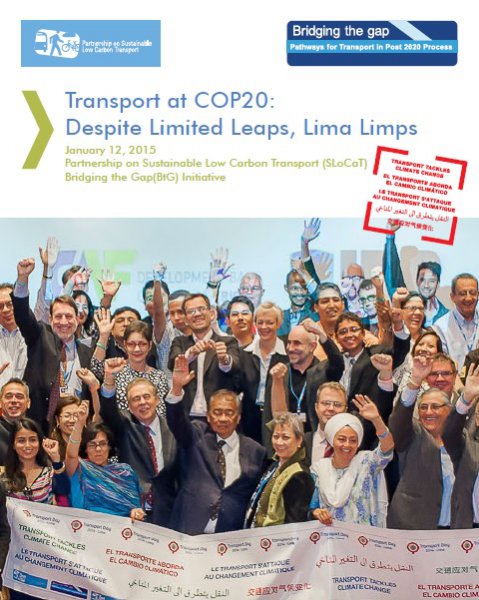Measuring, reporting and verifying emissions in the transport sector
While the transport sector is a key promoter of development and economic growth, it also causes significant GHG emissions. Therefore, it is crucial to address the transport sector when planning or implementing mitigation action. But how to assess the impact of transport based mitigation efforts?
PPMC Dialogue with Asian Countries Confirms Need for Accelerated Action on Transport and Climate Change
On November 18, The Partnership on Sustainable Low Carbon Transport (SLoCaT), on behalf of the Paris Process on Mobility and Climate (PPMC), led a regional dialogue on transport and climate change at the United Nations Centre for Regional Development (UNCRD) Ninth Regional Environmentally Sustainable Transport (EST) Forum in Asia.
UNFCCC Report Highlights Key Role of Sustainable Transport in Climate Actions
“This summary, shows how the strong deployment of policies within renewable energy, energy efficiency, transport, land use, carbon capture, use and storage and non-CO2 gases dramatically reduces greenhouse gas emissions at the same time as advancing goals in no less than 15 other areas, including citizens’ quality of life, health and work, lower government spending and higher tax revenues, better energy security and delivery and improved private sector profits”.
INDCs of Morocco and Ethiopia Propose Actions on Transport
In preparation of COP 21, countries have agreed to publicly outline their post-2020 climate action plans, known as their Intended Nationally Determined Contributions (INDCs).
Transport at COP20: Despite Limited Leaps, Lima Limps
 The joint report* of the Partnership on Sustainable Low Carbon Transport (SLoCaT Partnership) and
The joint report* of the Partnership on Sustainable Low Carbon Transport (SLoCaT Partnership) and
SLoCaT Partnership is tracking UNFCCC Negotiations from a Transport Perspective
The Partnership on Sustainable Low Carbon Transport (SLoCaT), along with the Bridging the Gap (BtG) Initiative are providing for the first time regular updates on how the COP 20 discussions are affecting land transport. In tracking the negotiations, the organizations will pay specific attention to:
(a) Pre-2020 Mitigation Ambition;
(b) Intended Nationally Determined Contributions;
(c) NAMAs;
UNEP Publishes Reports on Low Carbon Transport and City Planning in India
Three reports released by the UN Environment Programme (UNEP) evaluate and summarize options for low carbon city planning, non-motorised transport (NMT) and infrastructure risks due to climate variability in India. The reports were published as part of the project on ‘Promoting Low Carbon Transport in India.’
US, China Agree on Climate Change Mitigation Actions
The US and China agreed to five new action initiatives to reduce greenhouse gas (GHG) emissions and air pollution, focusing on: emission reductions from heavy-duty and other vehicles; smart grids; carbon capture, utilization and storage (CCUS); the collection and management of GHG emissions data; and energy efficiency in buildings and industry.
UNFCCC's Momentum for Change 2012 Report Focuses on the Urban Poor
The UNFCCC Secretariat has released the 2012 report on the Momentum for Change Initiative. The report features nine experiences that contribute to address climate change while improving livelihoods and living conditions in developing countries’ urban areas.
UN Reports GHG Emissions on Journey Towards Climate Neutrality
The UN has launched the fourth edition of Moving Towards a Climate Neutral UN, the annual progress report on the UN’s journey towards climate neutrality, which details the UN’s greenhouse gas (GHG) emissions in 2011 and some of the activities undertaken in 2012 to reduce them.